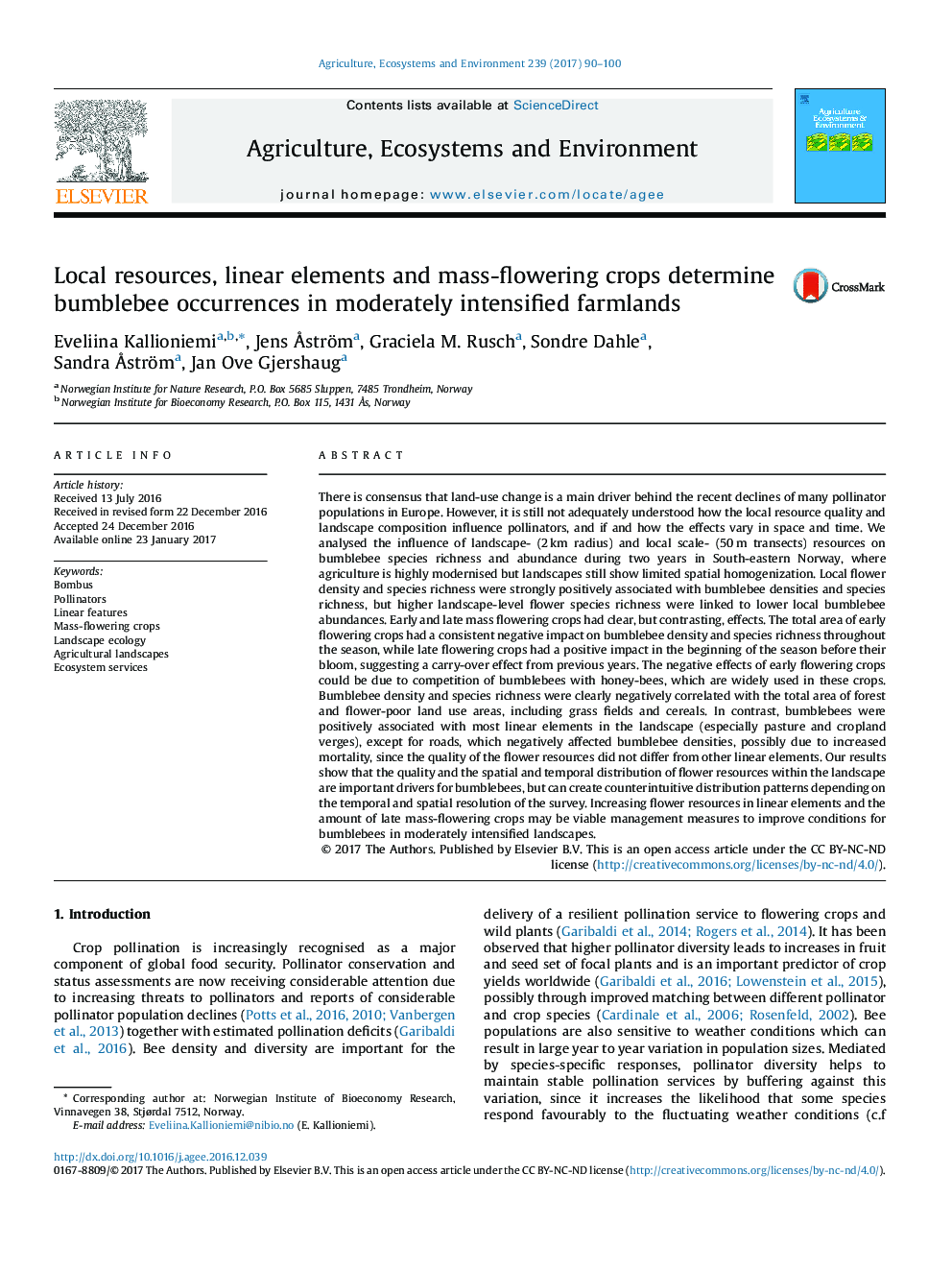| کد مقاله | کد نشریه | سال انتشار | مقاله انگلیسی | نسخه تمام متن |
|---|---|---|---|---|
| 5537915 | 1552013 | 2017 | 11 صفحه PDF | دانلود رایگان |
عنوان انگلیسی مقاله ISI
Local resources, linear elements and mass-flowering crops determine bumblebee occurrences in moderately intensified farmlands
ترجمه فارسی عنوان
منابع محلی، عناصر خطی و گیاهان گلدهی، وقایع شبیه را در مناطق زراعی نسبتا تشدید می دهند
دانلود مقاله + سفارش ترجمه
دانلود مقاله ISI انگلیسی
رایگان برای ایرانیان
کلمات کلیدی
بمبوس، گرده افشانی، ویژگی های خطی، محصولات گل کلم، محیط زیست چشم انداز، مناظر کشاورزی، خدمات محیط زیستی،
موضوعات مرتبط
علوم زیستی و بیوفناوری
علوم کشاورزی و بیولوژیک
علوم زراعت و اصلاح نباتات
چکیده انگلیسی
There is consensus that land-use change is a main driver behind the recent declines of many pollinator populations in Europe. However, it is still not adequately understood how the local resource quality and landscape composition influence pollinators, and if and how the effects vary in space and time. We analysed the influence of landscape- (2Â km radius) and local scale- (50Â m transects) resources on bumblebee species richness and abundance during two years in South-eastern Norway, where agriculture is highly modernised but landscapes still show limited spatial homogenization. Local flower density and species richness were strongly positively associated with bumblebee densities and species richness, but higher landscape-level flower species richness were linked to lower local bumblebee abundances. Early and late mass flowering crops had clear, but contrasting, effects. The total area of early flowering crops had a consistent negative impact on bumblebee density and species richness throughout the season, while late flowering crops had a positive impact in the beginning of the season before their bloom, suggesting a carry-over effect from previous years. The negative effects of early flowering crops could be due to competition of bumblebees with honey-bees, which are widely used in these crops. Bumblebee density and species richness were clearly negatively correlated with the total area of forest and flower-poor land use areas, including grass fields and cereals. In contrast, bumblebees were positively associated with most linear elements in the landscape (especially pasture and cropland verges), except for roads, which negatively affected bumblebee densities, possibly due to increased mortality, since the quality of the flower resources did not differ from other linear elements. Our results show that the quality and the spatial and temporal distribution of flower resources within the landscape are important drivers for bumblebees, but can create counterintuitive distribution patterns depending on the temporal and spatial resolution of the survey. Increasing flower resources in linear elements and the amount of late mass-flowering crops may be viable management measures to improve conditions for bumblebees in moderately intensified landscapes.
ناشر
Database: Elsevier - ScienceDirect (ساینس دایرکت)
Journal: Agriculture, Ecosystems & Environment - Volume 239, 15 February 2017, Pages 90-100
Journal: Agriculture, Ecosystems & Environment - Volume 239, 15 February 2017, Pages 90-100
نویسندگان
Eveliina Kallioniemi, Jens Ã
ström, Graciela M. Rusch, Sondre Dahle, Sandra Ã
ström, Jan Ove Gjershaug,
